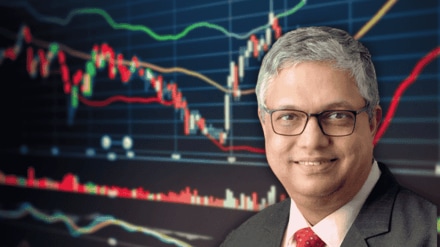The Indian markets have been rather tepid lately. Market expert S Naren, Executive Director and Chief Investment Officer at ICICI Prudential AMC, believes the Indian market may perform better on a relative basis, but it is difficult to predict its performance on an absolute scale.
Speaking at CNBC-TV18’s Global Leadership Summit, Naren said the biggest risk to global markets is a possible correction in the US market. “The major risk now is something going wrong in the US, especially with AI stocks. Since the US makes up nearly 60% of the global index, it is unrealistic to expect India to rise if the US declines,” Naren said.
“On a relative basis, it gets much better from here because India has underperformed every other market in the world,” he added. However, he cautioned, “How the absolute markets behave from here is uncertain. Every market in the world is very costly today.”
US correction could hit all markets
Naren warned that if US markets fall sharply, no country will remain unaffected. “The world’s biggest market is the US. If the US goes down 20%, any market in the world will find it hard to go up,” he said. He highlighted that even during the 1999–2001 crash, Indian markets fell, even though the economy remained relatively strong.
Despite the risks, Naren remains cautiously optimistic, adding that markets could correct at any time.
‘The risk is not AI, but AI stocks’
Commenting on the risks associated with AI, Naren said, “The risk is not AI doing badly, it’s AI stocks doing badly.” Drawing a parallel with the dot-com bubble, he noted, “The internet didn’t do badly from 1999 to 2010, but internet stocks crashed between 1999 and 2002.”
Domestic investors driving the market
He pointed out that, unlike in earlier years when foreign institutional (FI) inflows were double domestic investments, FI participation is now minimal. Today, the entire burden of absorbing supply lies with domestic investors.
Currently, India’s market is supported by steady domestic inflows through SIPs, while foreign investors have remained cautious. “Earlier, FI money used to be double the local money. Today, we have very low FI money. The entire burden of matching all the promoter and PE selling is on domestic investors,” he said.
“The day supply comes down for three months while SIP flows keep coming, we can have a good rally ahead,” he added.
Foreign inflows key for next growth phase
Naren said foreign inflows will be crucial for India’s next leg of growth. “For 3% of GDP inflows to be absorbed, foreign investors need to invest as much as domestic investors. There’s a good chance FIIs will turn net buyers in the next 12 months — and then we can have 3% of GDP,” he said.
